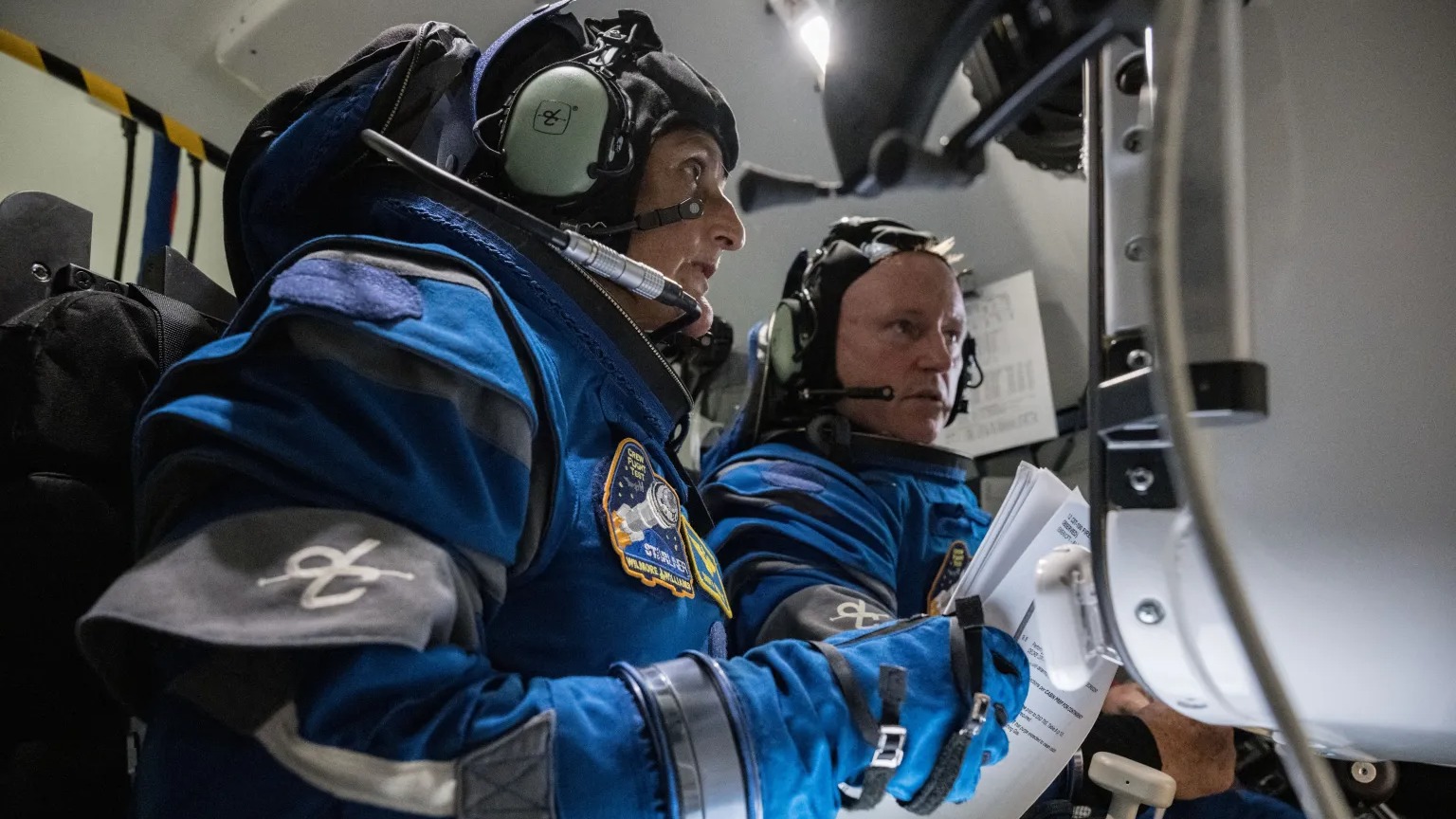Boeing Starliner spacecraft 'go' for 1st astronaut launch on May 6, NASA says
Starliner will rocket to space on Monday (May 6), if all goes according to plan.

CAPE CANAVERAL, FLORIDA — The new Starliner spacecraft is "go" for its first-ever astronaut launch on Monday (May 6), Boeing and NASA officials announced today (May 3).
Barring bad weather or any last-minute technical issues, Starliner was cleared to send two veteran NASA astronauts and former U.S. Navy test pilots to the International Space Station (ISS). On board this mission, known as Crew Flight Test (CFT), will be commander Barry "Butch" Wilmore and pilot Suni Williams.
The duo are completing last-minute training items and quarantining here at NASA's Kennedy Space Center ahead of their historic liftoff, which is scheduled for Mondauy at 10:34 p.m. EDT (0234 GMT on Tuesday, May 7) from Space Launch Complex 41 at Cape Canaveral Space Force Station. Coverage will run live here on Space.com, via NASA Television.
"We had the launch readiness review, and everyone polled 'go' to proceed," Steve Stich, manager of NASA's Commercial Crew Program, said during a press conference today.
CFT will not only be the first time that Boeing's Starliner carries astronauts, but also the first time that United Launch Alliance's (ULA) Atlas V rocket takes on that task. Rollout of the stacked rocket will take place tomorrow (May 4).
Pending the success of CFT, Boeing will join SpaceX in sending operational, six-month-long crewed missions to the ISS. Both companies received commercial crew contracts from NASA in 2014, with Boeing's valued at $4.2 billion back then, compared to SpaceX's $2.6 billion.
Breaking space news, the latest updates on rocket launches, skywatching events and more!
SpaceX has since launched 12 crewed missions to the ISS, including a test flight in 2020, while Starliner's first crewed effort has been delayed by several issues. The Boeing vehicle's first uncrewed flight to the ISS, which launched in December 2019, failed to reach its destination due to technical glitches. The pandemic, and the need to address the issues that arose on that first flight, delayed Starliner's second uncrewed test flight until May 2022. That effort was successful, reaching the ISS and meeting all of its other major objectives.
CFT was then slated to launch in 2023 — until more critical issues were uncovered, such as problems with the capsule's main parachutes and flammable tape on the capsule's wiring. These issues are behind the team, everyone has emphasized, and CFT is ready to go. If this first astronaut flight goes well, the debut operational crewed mission of Starliner should follow in 2025.
NASA and Boeing teams conducted a flight readiness review for CFT last week. That analysis identified two issues that required more attention: a valve needed to be replaced at the launch pad, and engineers wanted to further study contingency scenarios for the jettisoning of Starliner's forward heat shield during reentry to Earth's atmosphere.
That work has now been completed to the teams' satisfaction, Stich said today.
Related: 1st Boeing Starliner astronauts are ready to launch to the ISS for NASA (exclusive)
Starliner-1, the capsule's first operational mission, is slated to send three astronauts to the ISS: NASA's Mike Fincke (who is also serving as a CFT backup astronaut), alongside NASA's Scott Tingle and the Canadian Space Agency's Joshua Kutryk.
But that is pending the success of CFT, which will see Williams and Wilmore take manual control of the spacecraft numerous times, test emergency procedures for power-up and communications, and otherwise put the Starliner spacecraft through its paces for future missions.
The vision from NASA is for SpaceX's Dragon, Starliner and Russia's Soyuz spacecraft to continue sending astronaut crews to the ISS for the next several years. A selection of NASA astronauts continue to use Soyuz for policy and backup reasons, and Russia has committed to sending crews aloft until at least 2028.
While Starliner is not manifested for private missions yet, Boeing will fulfill something like six or seven missions for NASA during the nominal lifetime of ISS to 2030. A handful of private space stations are in the works, so there may still be destinations for Starliner, Dragon and Soyuz after the ISS retires.
Join our Space Forums to keep talking space on the latest missions, night sky and more! And if you have a news tip, correction or comment, let us know at: community@space.com.

Elizabeth Howell (she/her), Ph.D., was a staff writer in the spaceflight channel between 2022 and 2024 specializing in Canadian space news. She was contributing writer for Space.com for 10 years from 2012 to 2024. Elizabeth's reporting includes multiple exclusives with the White House, leading world coverage about a lost-and-found space tomato on the International Space Station, witnessing five human spaceflight launches on two continents, flying parabolic, working inside a spacesuit, and participating in a simulated Mars mission. Her latest book, "Why Am I Taller?" (ECW Press, 2022) is co-written with astronaut Dave Williams.
